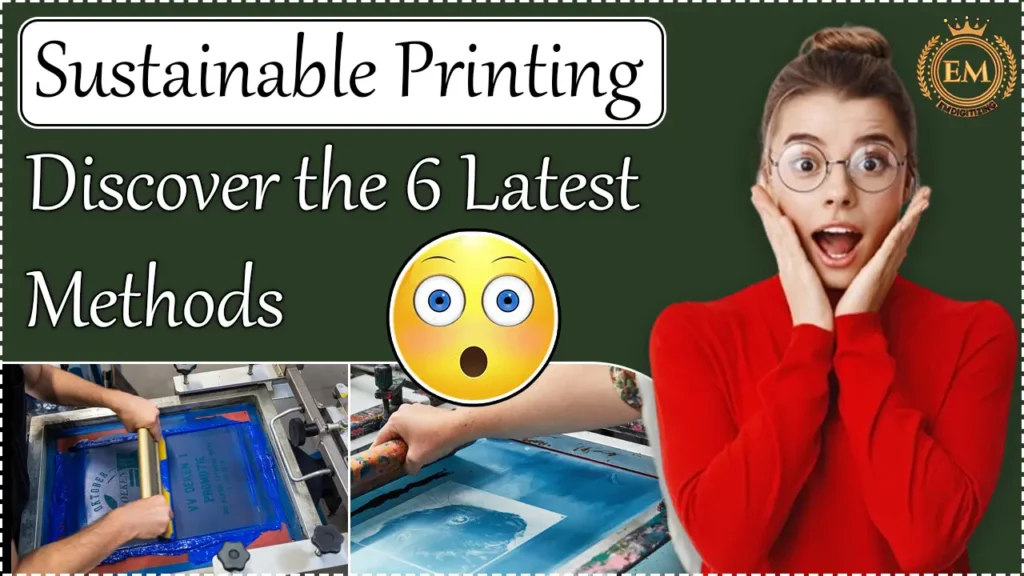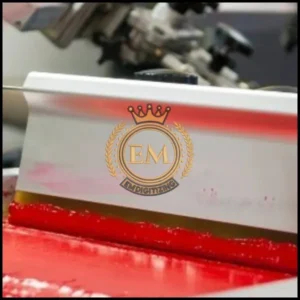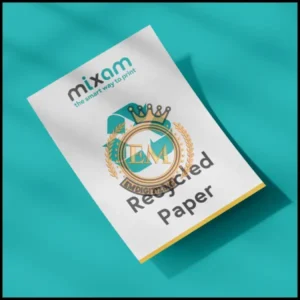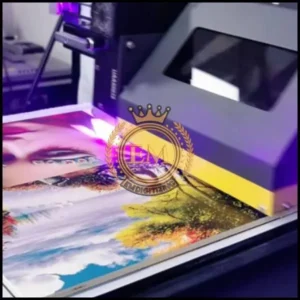Printing – it’s a necessary evil in our modern world. We rely on it for everything from business documents to birthday invitations.
But have you ever stopped to think about the impact all that ink and paper has on the environment?

Yeah, neither have most people. Luckily for you, sustainable printing is here to save the day (and the planet)!
In this article we explore the latest advancements in printing methods, By adopting these practices, the industry can significantly reduce its environmental impact while still meeting the demands of the modern world.
Sustainable Printing: Discover The 6 Latest Methods
Why Do You Need Sustainable Printing?
Traditional printing methods have been used for centuries, but they come at a cost – and I’m not just talking about the price of ink cartridges.
These methods can be wasteful, resource-intensive, and harmful to the environment. From the energy used in production to the chemicals released into the air and water, traditional printing leaves a not-so-pretty footprint on our planet. It’s time for a printing revolution!
Why is sustainable printing important?
Well, did you know that the printing industry is one of the largest contributors to deforestation and landfill waste?
Not to mention the harmful chemicals and carbon emissions associated with traditional printing methods. By embracing sustainability, we can reduce our carbon footprint, preserve natural resources, and create a greener future.
Sustainable Printing Methods:
Enter the heroes of the printing world – sustainable printing technologies. These innovative methods are designed to minimize waste, reduce energy consumption, and help you sleep better at night knowing you’re doing your part for Mother Earth.
From bio-based inks to waterless printing techniques, these technologies are changing the game.
1. Waterless Printing
Forget what you know about traditional printing methods that involve gallons of water being used and wasted. Waterless printing is a game-changer.

It’s a printing technique that eliminates water from the process entirely. Instead, it utilizes silicone-coated plates that repel ink, resulting in sharper and more vibrant prints.
Advantages of Waterless Printing
- Besides conserving water, it also reduces paper waste and chemical usage. The absence of water in the process means faster drying times and reduced energy consumption.
- Additionally, waterless printing produces excellent color accuracy and finer details, making it a win-win for both the environment and the visual appeal of printed materials.
2. Soy-based Ink printing
You might be thinking, “Soy in ink?”
Yes, you heard it right.
Soy-based ink is an eco-friendly alternative to traditional petroleum-based ink. It is made from soybean oil or other vegetable oils instead of relying on non-renewable fossil fuel resources.

Soy-based ink also contains lower levels of volatile organic compounds (VOCs) compared to petroleum-based ink.
Advantages of Using Soy-based Ink in Printing
Using soy-based ink in printing comes with a plethora of benefits.
- First and foremost, soybeans are a renewable resource, making this ink option more sustainable.
- In addition, soy-based ink is easier to remove during the recycling process, improving the quality of recycled paper.
- Furthermore, soy-based ink produces vibrant and sharp prints, and it’s also less likely to leave ink residue on printing equipment.
So, not only is it good for Mother Earth, but it also ensures high-quality prints.
3. Recycled Paper Printing
Recycled paper is a champion among sustainable print options. It’s made from post-consumer waste paper that has been collected, processed, and turned into new paper products.

Using recycled paper, we reduce the demand for wood pulp and decrease the amount of waste destined for landfills.
Benefits Of Using Recycled Paper in Printing
Using recycled paper in printing has significant benefits:
- It saves trees, reduces energy consumption, and minimizes air and water pollution associated with paper production.
- Recycled paper also often has a lower carbon footprint than its non-recycled counterparts.
Challenges Of Using Recycled Paper in Printing
However, challenges may arise when it comes to print quality and availability of certain paper types.
- Nonetheless, with advancements in recycling technology, the quality of recycled paper continues to improve, making it a viable and environmentally friendly option for printing needs.
4. Digital Printing
Digital printing has revolutionized the printing industry with its speed, flexibility, and cost-effectiveness.
Unlike traditional printing methods that require the creation of printing plates or screens, digital printing transfers images directly from a digital file to the printing surface.

This eliminates the need for setup time, reduces waste, and enables on-demand printing.
Digital printing is widely used for various applications, including marketing materials, packaging, and personalized products.
Benefits of Digital Printing
Digital printing offers several sustainability benefits compared to traditional printing methods:
- Firstly, it allows for shorter print runs, reducing excess inventory and waste.
- Secondly, it enables customization and personalization, eliminating the need for mass production and reducing resource consumption.
- Additionally, digital printing produces minimal emissions and uses fewer chemicals, making it a greener alternative for eco-conscious businesses.
5. UV-curable Printing
UV-curable printing is a sustainable printing method that utilizes ultraviolet (UV) light to cure or dry the ink during the printing process.

Unlike traditional solvent-based inks, UV-curable inks do not release harmful volatile organic compounds (VOCs) into the environment.
The UV light instantly triggers a chemical reaction in the ink, converting it from a liquid to a solid state. This quick curing process results in vibrant, durable prints with minimal drying time.
Advantages of UV-curable Printing for Sustainability
- Firstly, it eliminates the emission of harmful VOCs, improving air quality and creating a safer working environment.
- Secondly, it allows for printing on a wide range of substrates, including recycled and eco-friendly materials.
- Lastly, UV-curable inks have a longer shelf life compared to traditional inks, reducing waste and improving overall efficiency.
Emerging Technologies and Future Directions in Sustainable Printing:
Looking ahead, the future of sustainable print holds exciting possibilities. Emerging technologies, such as 3D printing and nanotechnology, show great potential for minimizing waste and optimizing resource usage.
3D printing, for instance, allows for precise and efficient production of three-dimensional objects, reducing material waste compared to traditional manufacturing processes.
Nanotechnology offers opportunities to develop more sustainable inks and coatings with enhanced properties and reduced environmental impact.
As these technologies continue to evolve, the printing industry can look forward to even more sustainable and innovative solutions to meet the growing demand for eco-friendly printing methods.
Conclusion:
In conclusion, the adoption of sustainable printing methods is essential for the printing industry to mitigate its environmental impact.
As the industry continues to evolve, it is crucial to stay updated on emerging trends and technologies that can further enhance sustainability in printing.
By prioritizing sustainable practices, the printing industry can play a vital role in preserving the environment for generations to come.
EMdigitizing: Vector Art Expert At Your Service:
Would you like some help making your design ready for screen printing?
Take a look at EMdigitizing! We provide vector art services worldwide and offer a great deal to you. You can get 50% off on your first order.
Our team is proficient in digitization; they meticulously digitize your design, ensuring that it is completed promptly and affordably.
Have you any inquiries? Reach out to us.
Our staff will respond to you quickly and is active 24/7. You can share this information with your friends if you think it’s useful.
Have fun stitching! I appreciate you taking the time to read this.
Frequently Asked Questions:
Sustainable printing involves using eco-friendly materials and methods to reduce environmental impact.
Print sustainably by using recycled materials, eco-friendly inks, and minimizing waste and energy consumption.
Sustainable printing reduces environmental damage, conserves resources, and meets eco-conscious consumer demands.
Digital printing is sustainable due to its lower waste, energy efficiency, and reduced chemical usage.
Yes, eco printing is sustainable as it uses natural dyes and materials, and minimizes environmental impact.
